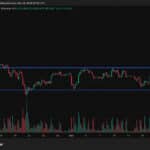
Looking prior to 1929 is appropriate for our busting a previous secular low in 2002 had not happened since the bear market campaign of 1929.
It is different this time, at least from recent history : On July 8, 1932, the Dow Jones Averages made a low at 40 and 1/5. This was equal to the April 1897 low and was successfully tested. Several bear market lows were tested and broken on that campaign. In fact we can track a general uptrend of higher lows from this April 1897 and July 1932 low up through the May 2000 highs. This current bear market campaign with highs in March of 2000 and May of 2007 (2007 higher closing but lower intraday) has broken past support similar to our crash in 1929 and subsequent rally. The key will be to see what support holds. So far, the 2002 S&P 500 low of 768 obviously did not hold.
The two most trenchant similarities of the two periods? 1) pre- and post Glass Steagel and perhaps not coincidentally 2)The top 0.01 percent of earners in the US are now taking home six percent of all the income, higher than the 1920s peak of five percent, and a whopping six-fold increase since the start of the Reagan administration, when the top 0.01 percent earned one percent of all the income. There is no consensus among economists on whether large disparities in income lead to economic disruption, but it is hard to ignore the correlation between rising income inequality and the onset of economic crisis. The last time the US saw similar differences in income was in 1928 and 1929, just before the start of the Great Depression.
Our current situation and prognosis : If inflation expectations are unanchored, then a severe recession can lead to a deflationary spiral. The logic is as follows: In the early stage of recession, the emergence of slack causes the inflation rate to dip. The resulting lower inflation rate prompts people to reduce their future inflation expectations. Continued economic slack causes the inflation rate to fall still further. If the recession is severe and long enough, this process eventually will cause prices to fall and then spiral lower and lower, resulting in ever-faster deflation rates. The deflation rate stabilizes only when slack is eliminated. And inflation turns positive again only after a sustained period of tight labor markets.
The second model is one where inflation expectations are "well anchored" in the sense that they are consistent with the goals and policies of the central bank. In this case, even in a severe recession, people expect the central bank to take policy actions (It is of course at all times just a confindence game.) that will restore a positive rate of inflation, and this expectation acts as a magnet pulling prices up. Although deflation will occur if the extent of slack is sufficiently large, a deflationary spiral only develops in the direst circumstances in which monetary policy is incapable of righting the economy.
The first model says you believe your lyin' eyes.
The second model says you believe in wizards.
How did these models apply to the 20s or Japan? A: Inflation did not fall into a deflationary spiral in the 20s and the Depression as would be expected if inflation expectations were not well anchored. Instead, deflation lasted only while the economy was getting worse and turned to positive inflation once the unemployment rate stabilized. In Japan, inflation expectations appear to have been reasonably well anchored despite the prolonged period of deflation and high unemployment.
In summary, even if it isn't anchors aweigh, the consumer is the economy stupid and its' jobs jobs jobs jobs jobs jobs jobs jobs jobs jobs jobs jobs before we can be served off the recovery menu.



1 comment:
Too bad the current administration can't figure out how to create jobs except by 'make work'.
Railroad construction with pick axe and sledgehammer to commence until full employment is reached.
Post a Comment